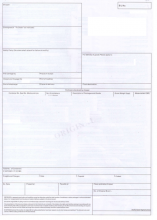
Maritime Bill of Lading Standard Package
The Maritime Bill of Lading Standard Package was developed as part of the United Nations response to the challenges of the COVID-19 pandemic under the United Nations multiagency project “Transport and Trade Connectivity in the Age of Pandemics: UN solutions for contactless, seamless and collaborative transport and trade”.
This electronic document equivalent Standard Package consists of the following elements:
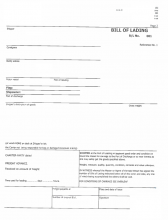
River Bill of Lading Standard Package
The River Bill of Lading Standard Package was developed as part of the United Nations response to the challenges of the COVID-19 pandemic under the United Nations multiagency project “Transport and Trade Connectivity in the Age of Pandemics: UN solutions for contactless, seamless and collaborative transport and trade”.
This electronic document equivalent Standard Package consists of the following elements:
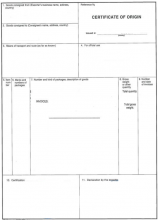
Preferential Certificate of Origin Standard Package
The Preferential Certificate of Origin Standard Package was developed as part of the United Nations response to the challenges of the COVID-19 pandemic under the United Nations multiagency project “Transport and Trade Connectivity in the Age of Pandemics: UN solutions for contactless, seamless and collaborative transport and trade”.
This electronic document equivalent Standard Package consists of the following elements:
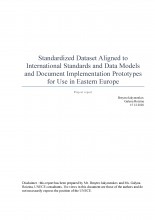
Report on standardized digitalization in Multimodal transport UA
This report covers the results of a pilot project in the implementation of: (a) the recommendations of the 2019 and 2020 Odessa trade facilitation seminars of the United Nations Economic Commission for Europe (UNECE) to support the development of digital multimodal transport corridors to increase the harmonization and standardization of data exchange in international transport, trade and logistics to encourage electronic data exchange and thereby to reduce person-to-person contacts during the COVID-19 crisis and in the post-pandemic recovery, using relevant standards of the United Nations Centre for Trade Facilitation and Electronic Business (UN/CEFACT), a subsidiary body of the UNECE.
The aim is to foster the harmonization of electronic data sharing using global (UN/CEFACT) standards for transport, trade and logistics, and to prepare standards for e-documents based on the UN/CEFACT semantic standards and reference data models. The focus will be on the development of electronic document equivalents for the documents mentioned above, using UN/CEFACT tools in the countries developing a digital multimodal transport corridor.
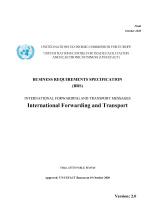
International Forwarding and Transport Standard Package
The current practice of the exchange of electronic messages for transport and logistics using UN/EDIFACT has provided a trusted and stable environment to communicate efficiently between actors in the supply chain since its introduction in 1990. The ongoing digitalization of supply chains, introduction of IoT devices such as smart containers, eCMR, and adoption of data pipeline principles in the transport and logistics domain processes raises new data requirements and migration path between these UN/EDIFACT messages and the Multi Modal Transport Reference Data Model (MMT RDM) is a key move to support future requirements.
The International Forwarding and Transport package contains the following elements:
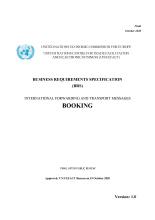
Booking Standard Package
Bookings form an integral part of the ‘Buy-Ship-Pay’ model where the transportation of goods is not only using available capacity offered by a Transport Service Provider but binds the supply chain together with a Transport Plan. This provides multiple interested parties with the planned movements of a consignment journey from which the delivery of service can be executed and measured.
The Booking Standard Package package contains the following elements:
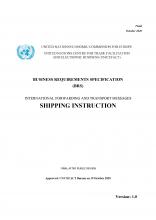
Shipping Instruction Standard Package
The Shipping Instructions are variously known as Shipping Instructions, Forwarding Instructions, Shippers Letter of Instruction and would typically follow the Booking from the Transport Service Buyer to the Transport Service Provider as a pre-cursor to the issuing of a waybill which then acts as the evidence of the transport contract.
The Shipping Instructions package contains the following elements:
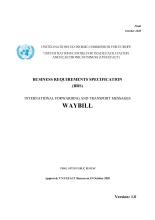
Waybill Standard Package
The Waybill is the evidence of a contract between the Transport Service Buyer and the Transport Service Provider, it is usually issued on collection or receipt by the Transport Service Provider. The waybill is used as a document of title and to show who has the right of ownership of the goods being transported.
The waybill is a common term covering various terms used in different modes of transport, for example;
• Bill of Lading, Ocean Bill of Lading, or Sea Waybill is used in Sea freight
• Air Waybill or eAWB is used in Airfreight
• Consignment Note (CMR or eCMR) is used in Road
• Rail Transport Document CIM and SGMS are used in Rail
The Waybill package includes the following elements:
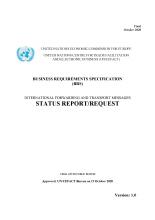
Status Report / Request Standard Package
The tracking of a consignment, goods or transport equipment is imperative to a success of a supply chain operation, accurate and timely status updates allow the Consignor and Consignee to plan and manage the flow and timing, identifying exceptions early on so that risk and disruption can be minimised. The status reporting processes can cover ad-hoc reporting (request) or contractual reporting (subscription).
The Equipment Status Report package includes the following elements:
The Consignment Status Report package includes the following elements:
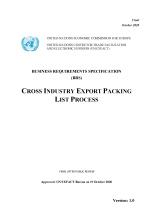
Export Packing List Standard Package
The Cross-Industry Export Packing List process has been compiled within the context of the United Nations Development Account (UNDA) coronavirus (COVID-19) response project “Transport and Trade Connectivity in the Age of Pandemics”, with a view to increase the harmonization and standardization of data exchange in international transport, trade and logistics to reduce person-to-person contacts during the COVID-19 crisis and in the post-pandemic recovery.
The Export Packing List Standard package includes the following elements: